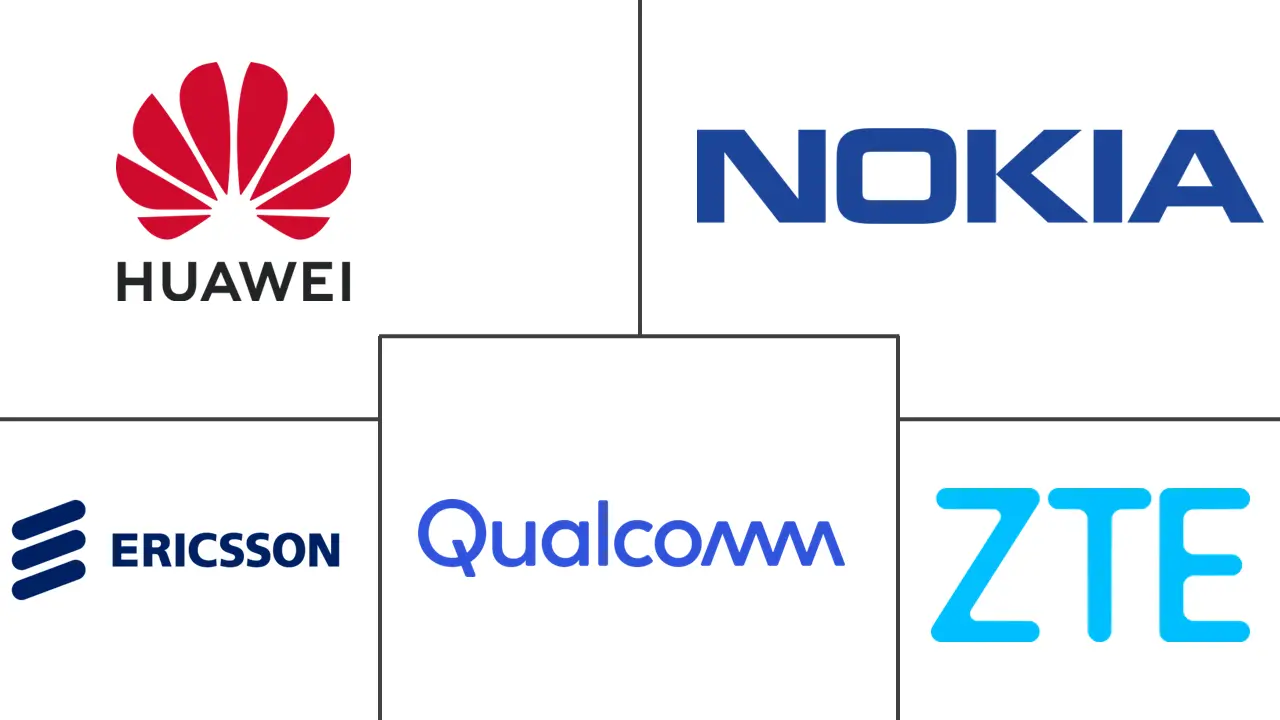Market Size of Asia-Pacific Small Cell 5G Industry

| Study Period | 2019 - 2029 |
| Base Year For Estimation | 2023 |
| Market Size (2024) | USD 0.55 Billion |
| Market Size (2029) | USD 3.96 Billion |
| CAGR (2024 - 2029) | 48.16 % |
| Market Concentration | Medium |
Major Players
*Disclaimer: Major Players sorted in no particular order |
Asia-Pacific Small Cell 5G Market Analysis
The Asia-Pacific Small Cell 5G Market size is estimated at USD 0.55 billion in 2024, and is expected to reach USD 3.96 billion by 2029, growing at a CAGR of 48.16% during the forecast period (2024-2029).
The trend of artificial intelligence (AI) and the Internet of Things (IoT) is observed in every sector, and to develop the urban outlook, Governments are working on smart city models.
- Smart cities' essential features are robust optical fiber connectivity, Wi-Fi, intelligent traffic management, smart parking, and energy-efficient street lighting. Small cells will be crucial in developing these smart cities because they can offer next-generation solutions.
- In the Asia-Pacific region, dominant operator groups are absent, and different countries have different levels of telecom development. Some countries of the region lack appropriate fiber penetration, and most currently operational macro sites lack fiber backhaul connectivity. Fiber backhaul support is required to deploy small cells efficiently and raise the current fiberization levels of large cell sites.
- Since underground fiber installation is costly and time-consuming, aerial fibers have been implemented in Japan due to their comparatively quick and straightforward installation processes. The slow installation of 5G infrastructure will restrain the small cell 5G market.
- To offer better indoor coverage, in Feb 2023, Ericsson developed the IRU 8850 indoor radio unit that will provide better network performance and user experience, regardless of the size or complexity of the building. The company claims it delivers up to four times the capacity of its predecessors.
Asia-Pacific Small Cell 5G Industry Segmentation
The small cells consist of low-powered radio access points, which can operate in the spectrum from 10 meters to a few kilometers. They are low energy consumption and inexpensive base stations. They can provide high data rates through their dense deployment to achieve high spatial spectrum efficiency. These are cost-effective units deployed in existing infrastructures, like light poles or inside a building. Small cells are essential for 5G networks as they use little power and provide high-band, high-speed covering smaller areas. These small cells can be categorized into femtocells, picocells, and microcells, per the usage.
The Asia-Pacific small cell 5g market is segmented by operating environment (indoor and outdoor), end-user vertical (telecom operators, enterprises, and residential), and geography (China, South Korea, India, Japan, and the Rest of Asia-Pacific). The market sizes and forecasts are provided in terms of value (USD) for the above segments.
| Operating Environment | |
| Indoor | |
| Outdoor |
| End-User Vertical | |
| Telecom Operators | |
| Enterprises | |
| Residential |
| Country*** | |
| China | |
| India | |
| South Korea | |
| Japan | |
| Australia and New Zealand |
Asia-Pacific Small Cell 5G Market Size Summary
The Asia-Pacific small cell 5G market is poised for significant growth, driven by the increasing demand for high-speed connectivity and the development of smart city infrastructure. As governments in the region focus on integrating artificial intelligence and the Internet of Things into urban planning, small cells are becoming essential for providing robust optical fiber connectivity, intelligent traffic management, and other smart city features. Despite the absence of dominant operator groups and varying levels of telecom development across countries, initiatives such as aerial fiber installations in Japan and regulatory exemptions in Singapore are facilitating the deployment of small cells. However, challenges like the slow installation of 5G infrastructure and the need for fiber backhaul connectivity at macro sites continue to pose constraints.
China, leading the global 5G development, is making substantial investments in expanding its 5G network, which is accelerating the deployment of small-cell solutions. The country's focus on 6G technology research further underscores its commitment to advancing telecommunications infrastructure. Prominent technology providers like Huawei, ZTE, and Ericsson are capitalizing on this growth, offering innovative solutions to enhance network performance. Collaborations and partnerships, such as those between HFCL and Qualcomm in India, and Singtel and Ericsson in Singapore, are driving the adoption of small-cell technologies. These developments are crucial for supporting 5G non-standalone and standalone modes, optimizing energy utilization, and improving indoor and outdoor coverage, thereby meeting the rising demand for efficient and effective connectivity solutions in the region.
Asia-Pacific Small Cell 5G Market Size - Table of Contents
-
1. MARKET DYNAMICS
-
1.1 Market Overview
-
1.2 Industry Attractiveness - Porter's Five Forces Analysis
-
1.2.1 Threat of New Entrants
-
1.2.2 Bargaining Power of Buyers/Consumers
-
1.2.3 Bargaining Power of Suppliers
-
1.2.4 Threat of Substitute Products
-
1.2.5 Intensity of Competitive Rivalry
-
-
1.3 Industry Value Chain Analysis
-
1.4 Impact of Covid-19 on the Market
-
-
2. MARKET SEGMENTATION
-
2.1 Operating Environment
-
2.1.1 Indoor
-
2.1.2 Outdoor
-
-
2.2 End-User Vertical
-
2.2.1 Telecom Operators
-
2.2.2 Enterprises
-
2.2.3 Residential
-
-
2.3 Country***
-
2.3.1 China
-
2.3.2 India
-
2.3.3 South Korea
-
2.3.4 Japan
-
2.3.5 Australia and New Zealand
-
-
Asia-Pacific Small Cell 5G Market Size FAQs
How big is the Asia-Pacific Small Cell 5G Market?
The Asia-Pacific Small Cell 5G Market size is expected to reach USD 0.55 billion in 2024 and grow at a CAGR of 48.16% to reach USD 3.96 billion by 2029.
What is the current Asia-Pacific Small Cell 5G Market size?
In 2024, the Asia-Pacific Small Cell 5G Market size is expected to reach USD 0.55 billion.

